 Fundamentals.jpg)
The Business Process Framework (eTOM) Fundamentals course offers in-depth knowledge of the eTOM model, enabling professionals to understand, map, and optimize telecom business processes. Participants will explore key concepts, process layers, and integration with digital technologies. This course is ideal for those aiming to enhance operational efficiency, support transformation initiatives, and align business strategies with standardized telecom process frameworks.
Business Process Framework (eTOM) Fundamentals Training Interview Questions Answers - For Intermediate
1. What is the purpose of having a standardized process framework like eTOM in telecom operations?
A standardized framework like eTOM provides a common language and structure for business processes across the telecom industry. It reduces ambiguity, facilitates better communication among departments and stakeholders, and streamlines integration between business and IT systems. This standardization also helps telecom operators benchmark performance, adopt best practices, and reduce operational costs while improving service quality and agility.
2. How does eTOM help in aligning business goals with IT strategies?
eTOM bridges the gap between business and IT by clearly defining the processes and their interrelationships in a structured way. It helps IT teams understand business needs and priorities, enabling the design and deployment of solutions that support strategic goals. This alignment leads to increased operational efficiency, better project outcomes, and quicker adaptation to market demands.
3. What is the Product Lifecycle Management (PLM) process in the eTOM framework?
The PLM process within eTOM is responsible for managing products from concept to retirement. It includes designing, testing, launching, and maintaining products and services. This ensures that offerings are aligned with market needs, cost-effective, and updated regularly to remain competitive. Effective PLM supports innovation and reduces time-to-market for new telecom services.
4. Can eTOM be applied to industries beyond telecommunications?
While eTOM was originally designed for telecom, its structured and modular approach makes it adaptable to other digital service industries such as media, IT services, and cloud providers. Many of its core concepts—like customer management, service fulfillment, and assurance—are applicable across sectors, though they may require customization for non-telecom environments.
5. How do Service Management and Operations processes interrelate in eTOM?
Service Management and Operations are closely linked in eTOM. Service Management oversees the planning, development, and delivery of services, while Operations ensures their execution, monitoring, and support. These processes work together to deliver seamless service experiences, manage SLAs, and ensure end-to-end service quality across customer-facing and internal systems.
6. What is the role of Enterprise Management in the eTOM framework?
Enterprise Management processes in eTOM support strategic planning, financial management, risk management, and overall governance. They ensure that the organization operates efficiently and aligns its business operations with long-term goals. These processes are foundational for decision-making, resource allocation, and ensuring regulatory compliance across the enterprise.
7. How does eTOM enhance interoperability among telecom systems and vendors?
By providing a common process vocabulary and structure, eTOM allows different systems and vendors to align their functionalities and interfaces more easily. This improves interoperability, reduces integration time and cost, and promotes the use of modular, vendor-agnostic solutions. It ultimately leads to a more agile and collaborative telecom ecosystem.
8. What is the difference between eTOM and ITIL frameworks?
While both eTOM and ITIL aim to improve business processes, eTOM is focused specifically on telecom operations and provides a broader business process framework including strategy, product, and customer domains. ITIL, on the other hand, is centered around IT service management. The two can be integrated, with eTOM providing the business context and ITIL offering best practices for service delivery.
9. How do the horizontal and vertical groupings in eTOM function?
In eTOM, vertical groupings represent different business domains such as customer, service, and resource management, while horizontal groupings represent lifecycle stages like fulfillment, assurance, and billing. Together, they provide a two-dimensional matrix that maps out all business activities, ensuring that every function and stage is covered for seamless service delivery.
10. What challenges do companies face in mapping their existing processes to eTOM?
Mapping existing processes to eTOM can be complex due to legacy systems, unclear process ownership, and a lack of documentation. Companies may also encounter resistance from staff unfamiliar with the framework. Overcoming these challenges requires strong change management, cross-functional collaboration, and a phased approach to implementation and alignment.
11. How does eTOM contribute to improved customer experience (CX)?
eTOM enhances CX by clearly defining processes for customer interaction, fulfillment, and issue resolution. It promotes responsiveness, consistency, and proactive service management. By optimizing these processes, telecom companies can reduce errors, minimize delays, and provide personalized support, leading to higher customer satisfaction and loyalty.
12. How is performance measurement supported within the eTOM framework?
eTOM enables performance measurement by defining standardized processes and KPIs (Key Performance Indicators) for each functional area. These metrics help organizations monitor efficiency, service quality, and customer satisfaction. By benchmarking against industry standards, companies can identify gaps, track improvements, and drive continuous process optimization.
13. How can eTOM support automation in telecom operations?
eTOM’s clearly defined and modular processes make it easier to identify areas for automation, such as order processing, fault detection, and billing. Automation tools can be aligned with eTOM’s process flows to reduce manual effort, improve accuracy, and speed up operations. This is essential for scaling services and reducing operational costs in a competitive telecom environment.
14. What is the significance of eTOM in mergers and acquisitions (M&A) in telecom?
During M&A, integrating different business processes and systems can be challenging. eTOM provides a standardized framework that can act as a blueprint for aligning operations, identifying redundancies, and streamlining processes across merged entities. It helps reduce integration time and ensures smoother transition by offering a shared reference model.
15. How do you approach tailoring eTOM for a specific telecom business model?
Tailoring eTOM begins with understanding the company’s services, structure, and strategic goals. You then identify relevant process areas within eTOM and map them to existing workflows, customizing where necessary. It’s essential to maintain the integrity of the framework while adapting it to suit the organization’s unique business model and operational constraints.
Business Process Framework (eTOM) Fundamentals Training Interview Questions Answers - For Advanced
1. How does the eTOM framework support the transition from legacy BSS/OSS systems to modern, modular architectures?
The eTOM framework aids in the transition from legacy BSS/OSS to modular architectures by providing a clear and comprehensive view of existing business processes and their interdependencies. By mapping legacy functions to eTOM process groupings, telecom organizations can identify redundant, outdated, or monolithic functionalities that need refactoring or replacement. eTOM’s modular design enables organizations to phase out legacy systems in a controlled manner while introducing microservices, APIs, and cloud-native components. This ensures continuity of operations while allowing innovation and modernization. Moreover, eTOM supports capability decomposition and alignment with TM Forum’s Open APIs, which makes integration with newer platforms more streamlined and interoperable, thus accelerating digital transformation.
2. How can eTOM be leveraged for enterprise-wide process harmonization and standardization across multi-country telecom operators?
In global or multi-country telecom operations, different regions often operate with fragmented processes and tools. eTOM serves as a unifying framework that allows organizations to harmonize and standardize business processes across geographies. By adopting eTOM as a baseline reference, companies can benchmark current-state processes, identify local deviations, and streamline operations into a globally consistent model. This standardization improves process efficiency, reduces operational costs, enhances compliance, and simplifies training. Additionally, it facilitates centralized performance monitoring and reporting, enabling leadership to make informed decisions based on uniform KPIs and metrics derived from eTOM-aligned processes.
3. How does eTOM support effective service quality management and continuous improvement in telecom operations?
eTOM facilitates service quality management by explicitly defining Assurance processes that include service performance monitoring, quality control, and trouble handling. These structured processes help operators proactively identify degradation in service, isolate root causes, and implement corrective actions. With defined KPIs tied to eTOM processes, operators can track quality over time, identify trends, and apply Six Sigma or Lean methodologies for continuous improvement. The feedback loop enabled by eTOM ensures that learnings from operational incidents lead to permanent enhancements in service design, provisioning, and support, fostering a culture of operational excellence and customer satisfaction.
4. What are the implications of adopting eTOM for telecom operators transitioning to 5G networks and services?
Transitioning to 5G introduces new service models, network slices, and ultra-low latency requirements, all of which demand enhanced operational capabilities. eTOM supports this by offering a process framework that is adaptable to the dynamic nature of 5G. It facilitates the orchestration of network resources, real-time assurance, and automated fulfillment across virtualized and distributed environments. Additionally, it supports the introduction of new revenue models like IoT services, edge computing, and private networks by aligning business processes to emerging technical and commercial needs. By integrating with NFV/SDN architectures and AI-driven automation, eTOM ensures telecoms can efficiently manage the complexity of 5G ecosystems while maintaining high service standards.
5. How can eTOM be applied in the context of Telecom Data Analytics and Business Intelligence?
eTOM enhances the effectiveness of telecom data analytics by structuring data collection around well-defined business processes. This alignment ensures that data captured from Fulfillment, Assurance, Billing, and CRM processes is meaningful, consistent, and actionable. For example, customer churn models can be built using data from eTOM’s Customer Relationship and Billing domains, while network performance analytics can leverage Assurance data. eTOM also supports the development of BI dashboards by acting as a taxonomy for organizing metrics and KPIs. With this structured foundation, organizations can derive insights that drive strategic decisions, operational improvements, and personalized customer experiences.
6. How does the eTOM framework address the management of virtualized and software-defined networks (SDN/NFV)?
Virtualized and software-defined networks introduce complexity in how services are provisioned, assured, and optimized. eTOM provides the necessary process clarity to manage these environments by delineating roles and responsibilities across virtual functions. In Fulfillment, eTOM processes help orchestrate dynamic service provisioning through VNF (Virtual Network Function) activation. In Assurance, it enables real-time monitoring of virtualized infrastructure for performance and fault detection. The Resource domain in eTOM is especially critical for mapping virtual and physical assets, enabling end-to-end visibility. This facilitates the integration of automation, policy-based management, and elasticity, all essential for efficient SDN/NFV operations.
7. How does eTOM influence the design and deployment of Customer Journeys in telecom?
eTOM supports customer journey design by mapping each interaction point to specific processes across CRM, Fulfillment, and Assurance domains. It enables organizations to visualize the entire lifecycle—from service discovery and ordering to issue resolution and loyalty programs—in a structured manner. By analyzing these touchpoints within the eTOM framework, telecom providers can identify friction areas, introduce automation, and personalize experiences. Moreover, it helps align back-office and front-office functions, ensuring consistency and responsiveness in customer engagement. This process-driven approach enables telcos to implement omnichannel strategies and deliver seamless, end-to-end journeys that align with customer expectations.
8. What is the strategic importance of eTOM in enabling telecom operators to adopt platform-based business models?
Platform-based business models, such as B2B2X ecosystems or digital marketplaces, require seamless integration, partner management, and dynamic service delivery. eTOM supports this by offering modular processes that can be extended to include third-party capabilities. For example, Partner Management processes in eTOM allow for onboarding, service-level management, and revenue sharing, which are critical in a platform economy. The framework also enables co-creation of value with partners while ensuring consistent quality and compliance. Strategically, eTOM positions telecom operators as ecosystem enablers rather than just connectivity providers, driving innovation and expanding revenue opportunities beyond traditional services.
9. How do eTOM-aligned processes help in managing and preventing revenue leakage?
Revenue leakage is a critical concern in telecom due to complex pricing, service bundling, and billing cycles. eTOM helps mitigate this risk through its Billing and Revenue Assurance process domains, which include mechanisms for usage data collection, charging validation, and dispute management. By ensuring accuracy and traceability across Fulfillment and Billing processes, eTOM helps detect anomalies, prevent fraud, and streamline reconciliation. Furthermore, integrating eTOM with analytics tools can help identify patterns of leakage and enforce controls. This proactive approach ensures revenue integrity and enhances trust with customers and stakeholders.
10. How does eTOM facilitate strategic product and service innovation within telecom organizations?
Innovation in telecom hinges on the ability to rapidly design, test, and deploy new services. eTOM’s Strategy & Product domain provides the foundational processes for market analysis, product lifecycle management, and go-to-market strategies. These processes enable telecom operators to identify opportunities, manage ideation pipelines, and coordinate development across IT and network teams. With structured inputs from customer feedback (CRM domain) and performance data (Assurance domain), the innovation cycle becomes more data-driven and customer-focused. eTOM also supports agile methodologies, allowing faster iterations and reducing time-to-market for new offerings.
11. What is the impact of eTOM adoption on cross-functional collaboration within a telecom enterprise?
eTOM fosters cross-functional collaboration by clearly defining process ownership, handoffs, and dependencies across departments. When departments such as sales, engineering, customer support, and finance operate under a unified process model, communication improves, and bottlenecks are reduced. For instance, in a typical order-to-cash journey, eTOM ensures that the transition from order entry (CRM) to provisioning (Fulfillment) to invoicing (Billing) is seamless and accountable. This clarity enhances coordination, breaks down silos, and leads to a more synchronized and efficient organization. It also supports role-based training and performance management aligned with enterprise objectives.
12. How does eTOM interact with TM Forum’s SID and Open API models to build composable architectures?
eTOM, SID (Shared Information/Data Model), and TM Forum Open APIs together form a robust triad for composable enterprise architecture. While eTOM defines what processes should be performed, SID provides a data model for the information used and exchanged during these processes. Open APIs, on the other hand, offer standardized interfaces to implement these processes across systems and vendors. When used together, they enable telcos to build composable, plug-and-play solutions that support agility and interoperability. This modularity is critical for introducing new services, integrating with external platforms, and scaling operations without reengineering the entire IT stack.
13. How does eTOM assist in the design and execution of SLA (Service Level Agreement) management processes?
SLA management is essential in both B2B and B2C contexts for ensuring service commitments are met. eTOM supports SLA lifecycle management through processes in the Customer, Service, and Resource domains. It enables structured agreement creation, monitoring, breach detection, and penalty enforcement. By integrating SLA parameters into Assurance processes like performance monitoring and fault management, operators can track compliance in real time. This visibility enables proactive issue resolution and strengthens client relationships. Additionally, the framework supports automated reporting and analytics, making SLA management more scalable and transparent.
14. How can telecom organizations use eTOM to prepare for disruptive trends like AI-driven self-healing networks?
As networks become increasingly intelligent and autonomous, eTOM provides the process backbone to manage and scale these capabilities. Self-healing networks require real-time data flow and decision-making, which can be aligned with eTOM’s Assurance and Resource Management processes. For instance, fault detection, impact analysis, and remediation can be automated using AI but must still follow governance and escalation workflows defined by eTOM. The framework ensures that automation does not compromise accountability and that insights from AI systems are integrated into continuous improvement loops. This structured approach balances innovation with operational control.
15. What governance mechanisms should be in place to ensure successful eTOM implementation and adoption?
Successful implementation of eTOM requires a governance structure that oversees strategy, design, execution, and continuous improvement. This includes establishing a cross-functional Process Governance Office, defining roles such as process owners and custodians, and creating a change management plan. Key governance tools include a central process repository, KPI dashboards, audit trails, and compliance checklists. Stakeholder engagement and executive sponsorship are also crucial to drive cultural adoption and resource commitment. Regular reviews, feedback loops, and process audits ensure that the eTOM framework remains aligned with evolving business goals and technological advancements.
Course Schedule
| Apr, 2025 | Weekdays | Mon-Fri | Enquire Now |
| Weekend | Sat-Sun | Enquire Now | |
| May, 2025 | Weekdays | Mon-Fri | Enquire Now |
| Weekend | Sat-Sun | Enquire Now |
Related Courses
Related Articles
Related Interview
Related FAQ's
- Instructor-led Live Online Interactive Training
- Project Based Customized Learning
- Fast Track Training Program
- Self-paced learning
- In one-on-one training, you have the flexibility to choose the days, timings, and duration according to your preferences.
- We create a personalized training calendar based on your chosen schedule.
- Complete Live Online Interactive Training of the Course
- After Training Recorded Videos
- Session-wise Learning Material and notes for lifetime
- Practical & Assignments exercises
- Global Course Completion Certificate
- 24x7 after Training Support



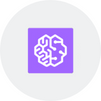
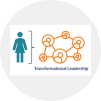
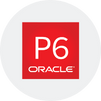
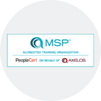
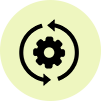


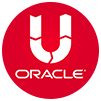
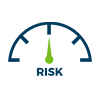
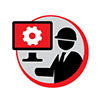

 Join our Live Instructor-Led online classes delivered by industry experts
Join our Live Instructor-Led online classes delivered by industry experts